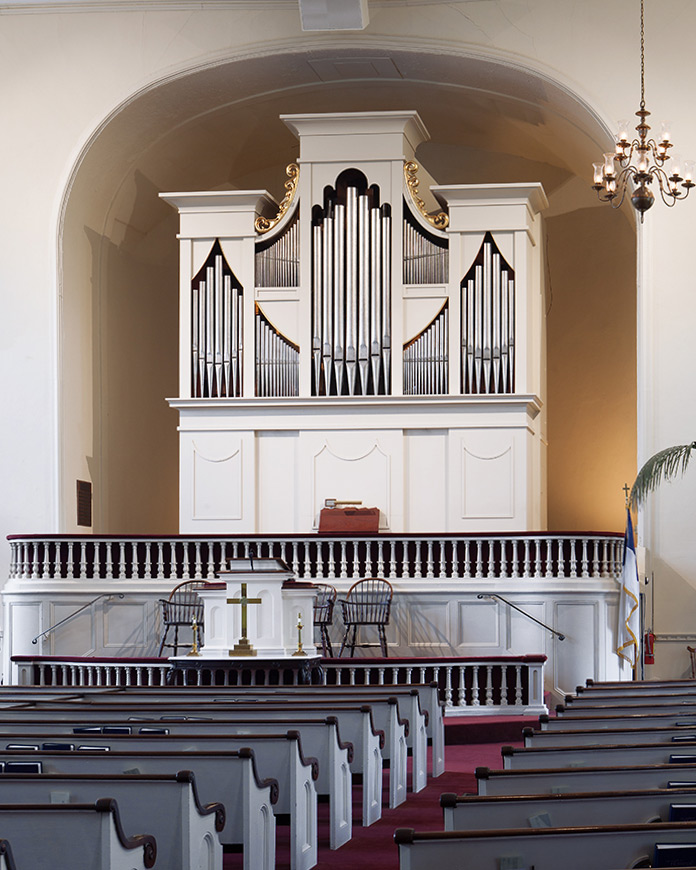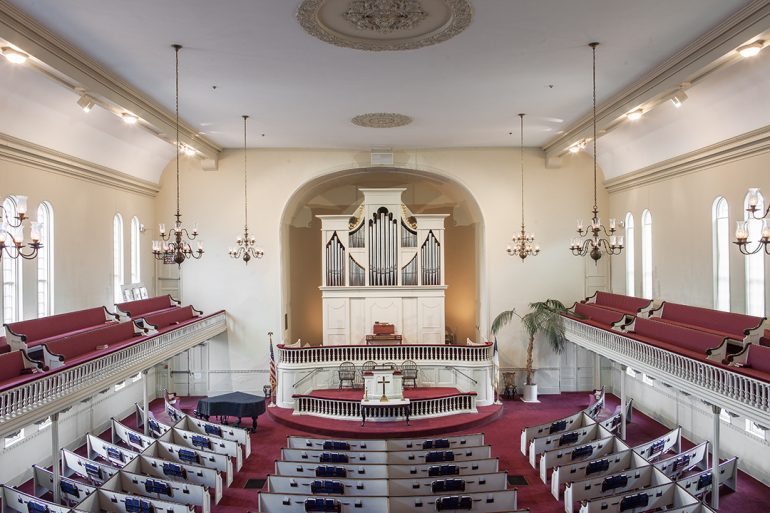
- phone: 978.283.1909
- email: cbfisk@cbfisk.com
Opus 71
First Congregational Church
Westfield, MA
Ranks: 25Independent Voices: 19
Created: 1977
“It was with a certain sense of awe that we learned in December of 1972 that we would be replacing Johnson’s organ Opus 112 (1861, 1886) with our own organ Opus 71. One doubts that the people of Westfield can comprehend the esteem in which their city has come to be held by organ historians throughout the country. From 1844 to 1898 the Johnson Organ Company put Westfield on every organ enthusiast’s map by building some of America’s finest musical instruments. One of Johnson’s former factory buildings still stands and, by coincidence, is owned by a member of the First Church’s organ committee…
“It is only natural to wonder why we chose to replace Johnson’s organ rather that to restore it. The answer is, the Johnson organ had been rebuilt so many times that proper restoration would have cost much more than a new instrument. And it seemed fitting, in this place where creativity played such a part in yesterday’s organ world, that we make something unusual, something new in the way of an organ for this church. So this is what we have done, although in so doing we have used a number of the old Johnson pipes, which means that after 116 years, Johnson’s organ still contributes to music making here in the First Congregational Church of Westfield. Indeed, our organ would have no bass tones and not much for reed tone if we took away the Johnson pipework.
“What makes this organ unusual in our day is what it borrows from an organ builder whose work Johnson would not have known, Gottfried Silbermann of Saxony. Silbermann was a friend of J. S. Bach and his organs were greatly esteemed by Bach. Our Opus 71 does not copy any Silbermann organ exactly, but it does employ one version of Silbermann’s standard tone cabinet design for a two-manual organ, and its wind ducts, bellows and tremulant are to Silbermann’s dimensions. The Silbermann organ most closely represented here is the 21-voice instrument at Grosshartmannsdorf near Freiberg, East Germany, an instrument of rare beauty.
“For Opus 71 we have used our own scales (pipe dimensions) rather than Silbermann’s, although some of the voicing is after Silbermann’s manner, most notably in the 8′ Prestant on the Great. The manual reeds, which would not have appeared in a Silbermann organ of this size, are from the Johnson organ and have had their original shallots opened wide so as to produce something of the fiery reed sound known to Silbermann and Bach.
“The organ case façade is an adaptation of Silbermann’s Grosshartmannsdorf pattern. The layout of the front pipes is Silbermann’s, but the woodwork is greatly simplified. In this form the case resembles certain American organ cases of the early nineteenth century. The two ornamental gilded wave carvings atop the compartments were designed and carved by Ann Fisk, and are again an adaptation of a type used by Silbermann.”
Charles Fisk, 1977
Great
Bourdon 16′ *
Prestant 8′
Chimney Flute 8′
Principal 4′
Flute 4′
┌Nighthorn 2′
└Cornet III
┌Doublet 2′
└Mixture IV-VI
Trumpet 8′ *
Choir (Oberwerk)
Stopt Diapason 8′ *
Spire Flute 4′
┌Nazard 2 2/3′
└Sesquialtera II
Prestant 2′
Sharp IV
Clarinet 8′ *
Pedal
Principal 16′ *
Octave 8′ * from 16′
Superoctave 4′ * from 16′
Bassoon 16′
Couplers:
Choir to Great
Great to Pedal
Choir to Pedal
Accessories:
Tremulant
Manual keyboards, CC-c4 61 notes, concave radiating Pedalboard, CC-g1 32 notes
Key and stop actions are mechanical.
* Pipework from pre-existing Johnson organ, rebuilt and revoiced.

